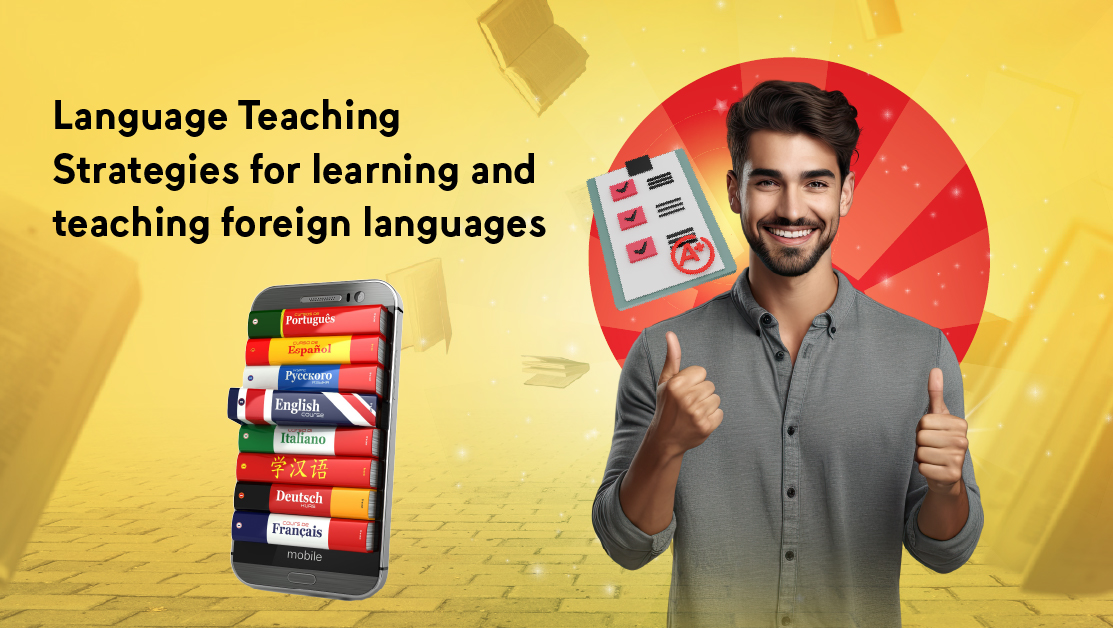
Language is the key to a world of opportunities, bridging gaps, and fostering connections between people from diverse backgrounds. In today’s globalized society, language education has assumed a pivotal role, promoting cross-cultural understanding and enriching personal and professional growth. This essay explores the multifaceted realm of language teaching, delving into effective strategies for teaching and learning foreign languages.
Language Education: A Bridge to Multiculturalism
The Importance of Learning Languages
The importance of learning languages cannot be overstated. In a world where geographical boundaries blur and cultural diversity intertwines, the ability to speak multiple languages is a valuable asset. Beyond communication, language education plays a vital role in shaping a well-rounded individual.
Learning a foreign language goes beyond the mechanics of speech; it opens a window into another culture, allowing individuals to appreciate the nuances and intricacies of diverse societies. As global citizens, it is essential to recognize the value of learning languages in promoting inclusivity and fostering a sense of unity in diversity.
The Role of the Educator
Empowering Language Teachers
While strategies for learning and teaching foreign languages have evolved, the role of the educator remains irreplaceable. Language teachers are not just purveyors of grammar and vocabulary; they are mentors who inspire, guide, and facilitate the language learning journey.
Building Motivation
One of the primary responsibilities of a language teacher is to ignite motivation in their students. Learning a foreign language can be challenging, and motivation is the fuel that keeps learners going. A passionate and motivating teacher can make all the difference in a student’s language education journey.
Fostering Confidence
Language teachers play a crucial role in building students’ confidence. By creating a supportive and encouraging classroom environment, teachers empower students to take risks and embrace their language learning experiences. Confidence is a cornerstone for effective language use.
Embracing Cultural Sensitivity
Language teachers must also impart cultural sensitivity. It’s not just about mastering grammar and vocabulary; it’s about understanding the cultural nuances that shape language use. Educators should encourage students to respect and appreciate cultural diversity, thereby enhancing their language education.
Adapting to Changing Landscapes
As language education undergoes transformation, teachers must adapt and evolve with it. They need to incorporate new tools and techniques, stay updated with the latest trends, and understand the digital age’s impact on language learning. In doing so, they become effective facilitators of the language education process.
Language Teaching Strategies
The world of language teaching has come a long way from the traditional methods that often revolved around rote memorization and dry grammar drills. Today, we find a rich tapestry of contemporary approaches that make language learning a dynamic and engaging process.
Immersion: The Power of Context
One of the most effective strategies for learning and teaching foreign languages is immersion. By surrounding oneself with the target language, whether through living in a foreign country or through immersive online experiences, students absorb the language in its cultural context. Immersion not only enhances language skills but also provides valuable insights into the culture and customs of the speakers.
Gamification: Learning through Play
Incorporating gamification into language education has proved to be a dynamic approach. Games and interactive apps make learning enjoyable and engaging. This strategy for learning and teaching foreign languages leverages the natural human instinct for competition and rewards, motivating learners to progress while having fun.
Communicative Approach: Real-Life Relevance
The communicative approach is rooted in real-life communication. It encourages learners to focus on practical communication skills, emphasizing the ability to convey ideas effectively in a foreign language. Rather than rote memorization, this strategy emphasizes interactive speaking and listening exercises.
Personalization: Tailoring Learning to Individuals
Recognizing the uniqueness of every learner is a cornerstone of effective language education . Personalization strategies for learning and teaching foreign languages cater to individual learning styles and preferences. By adapting content and instruction to each student’s needs, teachers ensure that the learning process is relevant and engaging.
Cultural Context: Beyond Grammar and Vocabulary
Language education should not exist in isolation but rather in the context of culture. An understanding of cultural norms, etiquette, and social nuances is integral to effective language use. It also fosters a deeper appreciation of the culture and enriches the learning experience.
Contemporary Language Teaching Strategies
In the 21st century, technology has emerged as a powerful tool for language education. Online platforms, mobile apps, and virtual reality experiences have transformed the way languages are learned and taught. These technological strategies for learning and teaching foreign languages make learning more accessible and interactive, breaking down geographical barriers.
Online Language Courses: Global Accessibility
Online language courses have brought the world of language education to learners around the globe. With just an internet connection, students can access high-quality language courses, connect with native speakers, and participate in virtual classrooms. This accessibility is a game-changer in the world of language education.
Language Learning Apps: Learning on the Go
Language learning apps have revolutionized the way individuals pick up new languages. With user-friendly interfaces and interactive lessons, these apps make learning convenient and portable. Whether on a subway or during a coffee break, language learning is at your fingertips.
Virtual Reality: A Glimpse into Foreign Worlds
Virtual reality (VR) experiences transport learners into foreign environments. This immersive technology allows students to explore a foreign city, interact with native speakers, and engage with the language in a holistic way. The sense of presence and immersion in VR can enhance language learning in unprecedented ways.
As we look to the future, the importance of learning languages and embracing strategies for learning and teaching foreign languages remains ever-relevant. It is through language education that we can build bridges between cultures, transcend borders, and create a more inclusive and harmonious world. Language education continues to be a gateway to new worlds, unlocking opportunities and enhancing global citizenship. Strategies for learning and teaching foreign languages will continue to adapt and evolve, empowering individuals to explore new horizons and connect with the world in a profound and meaningful way.















